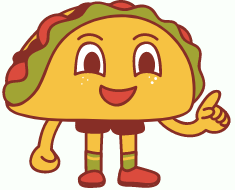Rice Congee, also known as rice porridge or jook, is a beloved comfort food in many Asian cultures. Made from simple ingredients like rice and water or broth, this dish is not only delicious but also nourishing and easy to digest.
Introduction to Rice Congee
Rice Congee is a staple in Asian cuisine, often served as a breakfast food or as a soothing meal for those feeling under the weather. It has a soft and creamy texture, similar to oatmeal or porridge, and can be customized with various toppings to suit individual preferences.

Ingredients for Rice Congee
To make Rice Congee, you’ll need the following ingredients:
- Rice: Any variety of rice can be used, though short-grain rice is commonly preferred for its creamy texture.
- Water or broth: Water can be used as the base for the congee, but broth adds extra flavor and richness.
- Optional toppings: Toppings can vary widely and may include sliced green onions, chopped cilantro, fried shallots, shredded chicken, century eggs, or pickled vegetables.
Recipe for Rice Congee
Cooking Rice
Start by rinsing the rice under cold water until the water runs clear. Then, combine the rice and water or broth in a large pot and bring it to a boil.
Simmering the Congee
Once the rice mixture comes to a boil, reduce the heat to low and let it simmer, stirring occasionally to prevent sticking. The congee should cook slowly over low heat until the rice grains are soft and the mixture has thickened to your desired consistency.
Adding Toppings
Once the congee is cooked to perfection, ladle it into serving bowls and top with your favorite toppings. Common choices include sliced green onions, chopped cilantro, shredded chicken, or fried shallots. Get creative and customize your congee to your liking.
How the dish helpful in upset stomach
Rice Congee can be useful in soothing an upset stomach due to its gentle and easily digestible nature. The soft texture of the rice, combined with the high water content of the congee, helps to hydrate the body and soothe gastrointestinal discomfort. Additionally, the simplicity of the ingredients makes it easy on the stomach, while the warm temperature provides comfort and relaxation. Rice Congee is often recommended as a bland and easily tolerated food for individuals experiencing nausea, vomiting, or other digestive issues. It can also be customized with gentle toppings such as sliced ginger or plain tofu, which may further aid in digestion and provide relief. Overall, Rice Congee is a comforting and nourishing option for calming an upset stomach and promoting overall digestive health.
Nutritional Facts of Rice Congee
Rice Congee is a nutritious dish that provides essential nutrients and energy. It is rich in carbohydrates, which are the body’s primary source of fuel, making it a satisfying and energizing meal. Additionally, it is low in fat and cholesterol, making it a heart-healthy option.
Health Benefits of Rice Congee
Easily Digestible
Rice Congee is gentle on the stomach and easy to digest, making it an ideal choice for those with sensitive stomachs or digestive issues. It is often recommended as a bland diet food for individuals recovering from illness or experiencing gastrointestinal discomfort.
Hydrating
The high water content of Rice Congee helps keep the body hydrated, which is essential for overall health and well-being. It can be particularly beneficial for those who are sick or unable to consume solid foods due to illness or surgery.
Nutrient-Rich
Despite its simple ingredients, Rice Congee is surprisingly nutrient-rich. It provides essential vitamins and minerals, including B vitamins, iron, and potassium, which are important for energy production, immune function, and overall health.
Supports Digestion
The soft and creamy texture of Rice Congee makes it easy to digest, allowing the body to absorb nutrients more efficiently. It also contains soluble fiber, which helps promote regularity and prevent constipation.
Comforting and Soothing
Rice Congee is not only nutritious but also comforting and soothing to the soul. Its warm and creamy texture provides a sense of comfort and security, making it the perfect choice for cold winter days or when you’re feeling under the weather.
Conclusion
In conclusion, Rice Congee is a simple yet satisfying dish that offers both nourishment and comfort. With its soft and creamy texture, customizable toppings, and numerous health benefits, it’s no wonder that this humble dish is cherished by so many.
FAQs
- Can I use brown rice or other grains to make congee?
- Yes, you can use brown rice or other grains like millet or quinoa to make congee, though the cooking time may vary.
- Can I make congee in a rice cooker or slow cooker?
- Yes, you can make congee in a rice cooker or slow cooker for added convenience. Just follow the manufacturer’s instructions for cooking rice or grains.
- Is congee suitable for vegetarians and vegans?
- Yes, congee can easily be made vegetarian or vegan by using vegetable broth and omitting any animal-based toppings.
- How long can I store leftover congee in the refrigerator?
- Leftover congee can be stored in the refrigerator for up to three days in an airtight container. Reheat gently before serving.
- Can I freeze leftover congee for later use?
- Yes, congee can be frozen for up to three months. Thaw and reheat before serving.
